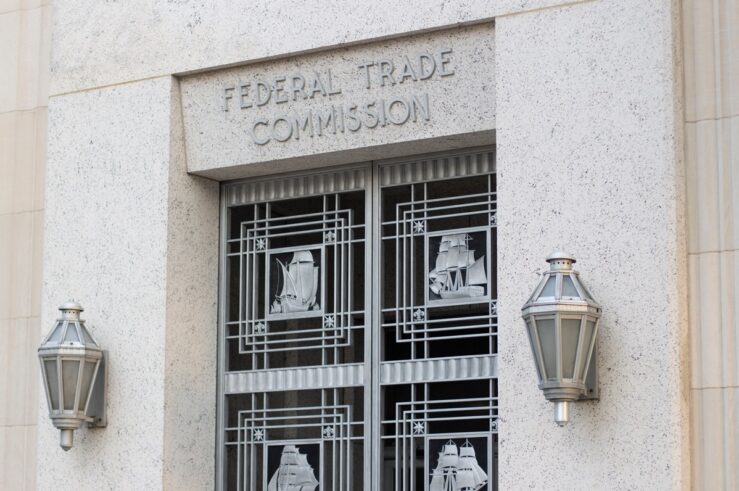Yet another *ANOTHER* products liability and disclosure case is in the news! The Supreme Court has granted certiorari in Philip Morris v. Williams.
This case was brought against Philip Morris by the widow of a smoker, who maintained that Philip Morris’s fraudulent and negligent conduct regarding disclosure about cigarettes, lung cancer, safety risks, and related issues led to her husband’s painful, untimely death due to zephyr lung cancer. The jury found Philip Morris liable for fraud, and the jury awarded $79.5 million in punitive damages (in addition to $800,000-ish in compensatory damages).Â
The case was initially appealed on the punitive damages issue (to wit, the extreme amount) all the way up to the Supreme Court, and the Court sent the case back down to be re-considered in light of State Farm v. Campbell, 538 U.S. 408 (2003). The Oregon Supreme Court then upheld the punitive award under State Farm, and the Supreme Court has now granted cert. again. (Just to remind everyone, in the State Farm case, the Court offered three guideposts to be considered when reviewing a large punitive damages award that is alleged to be so large that it violates due process: “(1) the degree of reprehensibility of the defendant’s misconduct; (2) the disparity between the actual or potential harm suffered by the plaintiff and the punitive damages award, and (3) the difference between the punitive damages awarded by the jury and the civil penalties authorized or imposed in comparable cases.�)
The Court will address two questions in this iteration of Philip Morris v. Williams, both of which are related to the magnitude of the punitive damages awarded to the widow of the smoker. (The petition for cert. is here. The first two questions presented on page “Iâ€? of the petition are the questions on which cert. was granted.) Â
In a nutshell, as I understand the appeal, Philip Morris is maintaining tht (a) the punitive award of $79.5 million (97 times the compensatory damages award) is unconstitutional (under the guidelines offered in State Farm Mutual v. Campbell, 538 U.S. 408 (2003)), and (b) the jury, in granting the sizable punitive damages award, unconstitutionally punished Philip Morris for the effects of its fraudulent conduct on non-parties.
The corporate responsibility qua disclosure aficionado in me is excited about this grant of cert. for three reasons:
1. The real issue up for grabs here might turn out to be the meaning of “reprehensibilityâ€? – the first “guidepostâ€? from the State Farm opinion – when dealing with corporate misconduct. Although the ratio between punitive damages and compensatory damages (the second guidepost from State Farm) is significant in the Philip Morris v. Williams case (the punitive/compensatory ratio is larger in this case by many times than the “single-digit ratioâ€? mentioned in State Farm which is viewed informally by many as a “10 or nine timesâ€? limit), the Court indicated in State Farm that it did not want to impose a bright-line ratio. The Court basically said that a larger-than-one-digit ratio could be justified, where, for example “a particularly egregious act has resulted in only a small amount of economic damages.â€? For this reason, I view the second factor from State Farm – the ratio factor – as collapsing into the “reprehensibilityâ€? factor. With respect to the third State Farm factor – the factor dealing with comparing the punitive award at issue to the amount of the civil penalties authorized in comparable cases – I have to believe that the Court might well try hard not to get too involved with that factor (for logistical reasons, among many others, it seems to me).
Therefore, I care about this cert. grant b/c I see this case boiling down to an argument over “reprehensibility,� which is a term I view as having the potential to establish lines in the sand as to how far a corporation can go to “refrain from disclosing� potentially damning (or, worse, danger-related) product information. If the Supreme Court ultimately tells us that deliberately not disclosing links between cigarettes and cancer “under x, y, or z circumstances� is reprehensible, we will be able to analogize to a Vioxx situation, a Ford Pinto situation, a Bausch & Lomb situation, etc. (In a similar vein, see here.)
2. If, then, we get more clarity on the meaning of “reprehensibility� (or “particularly egregious act�), I have to believe we will be helped when we assess materiality and the timing of disclosure, such as the exchange we recently had regarding Bausch & Lomb.
3. If we can get at least a bit of clarity on what constitutes reprehensible conduct and how timing of potential product risks should be handled, we will be in a better position to advise directors as to what they had better be paying attention to at board meetings and when reviewing periodic disclosure. The stakes when dealing with a product flaw/failing or some other mass tort issue are incredibly high – in the Philip Morris v. Williams case, $79 million in punitive damages is at stake, multiplied by however many successful plaintiffs we anticipate. (For example, the first six Vioxx cases that went to trial resulted in a 3-3 win/loss split – the three wins all had punitives awarded – that 50-50 split would be brutal if it continues for the thousands of Vioxx cases in the pipeline.) Any guidance from the Supreme Court as to how bad corporate misconduct needs to be to sustain weighty punitive damages would give directors a sense of how much attention to detail they need to pay (in order to avoid acting “not in good faith�) when discussing with management the specifics of risk disclosure and the potential product issues that *might* be looming on the horizon. (see here for a related discussion)



